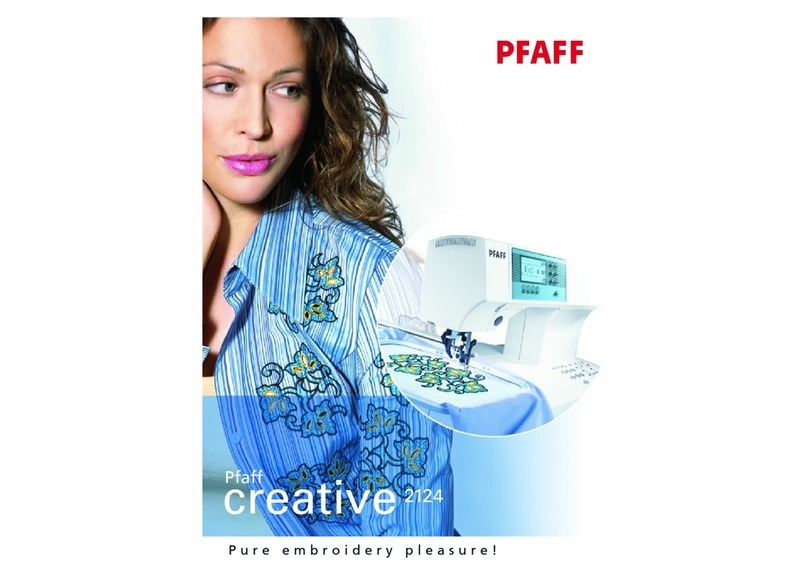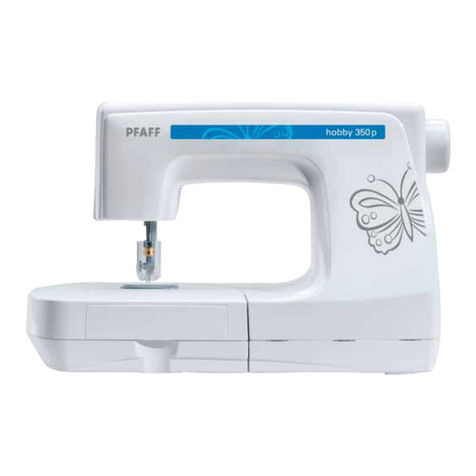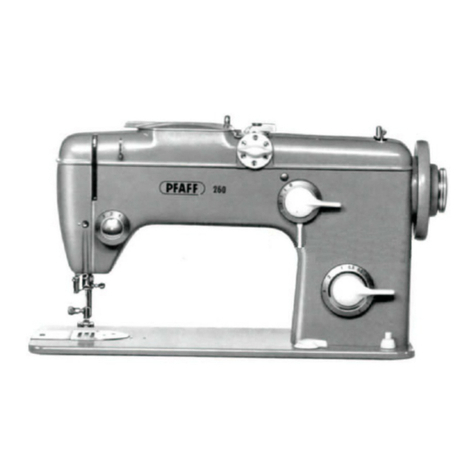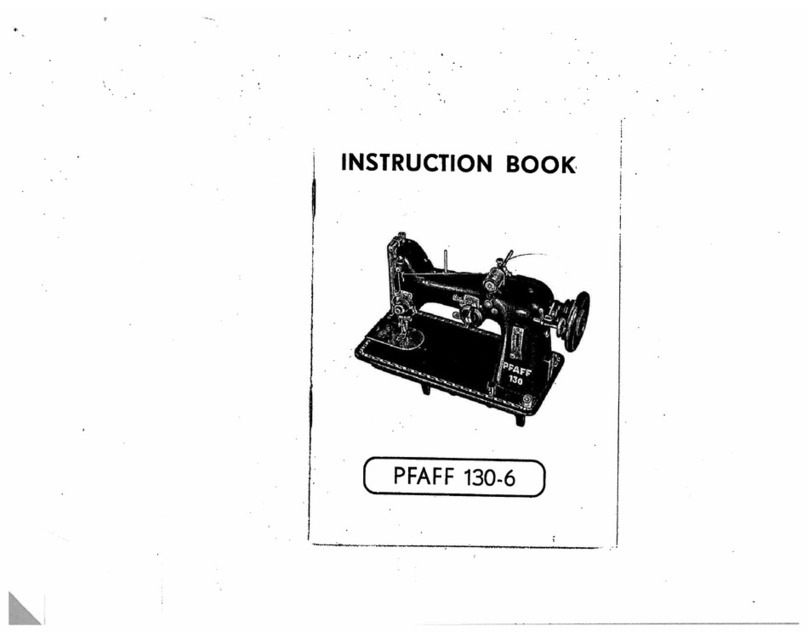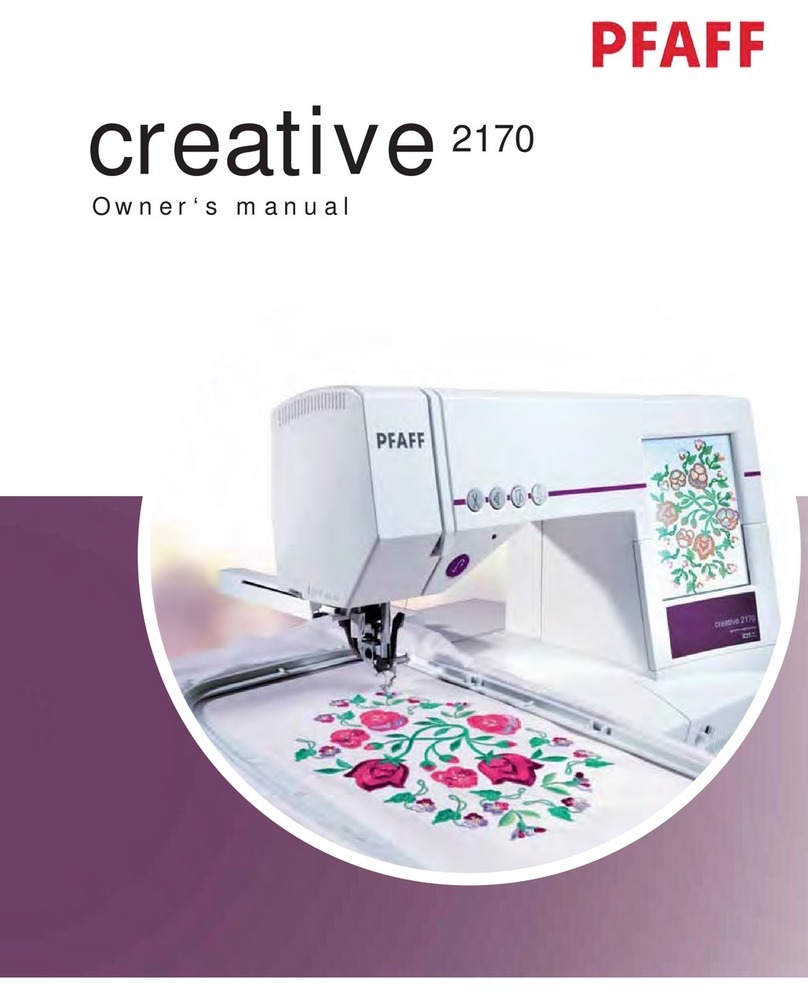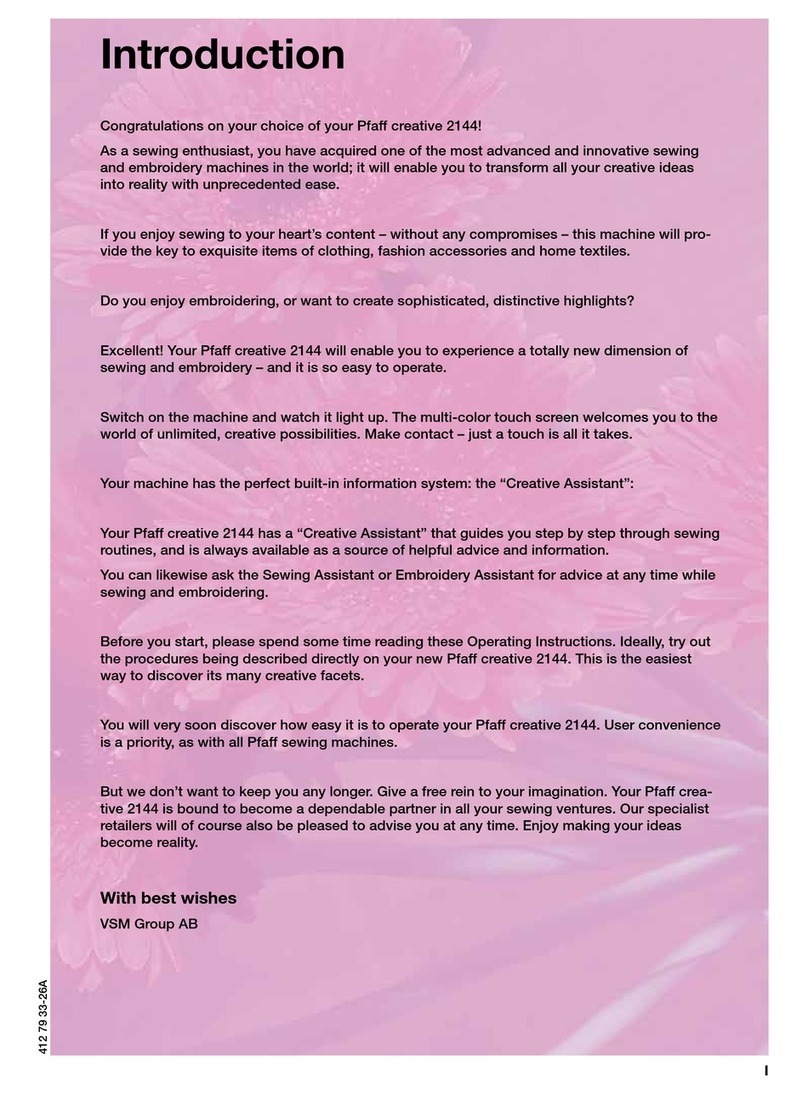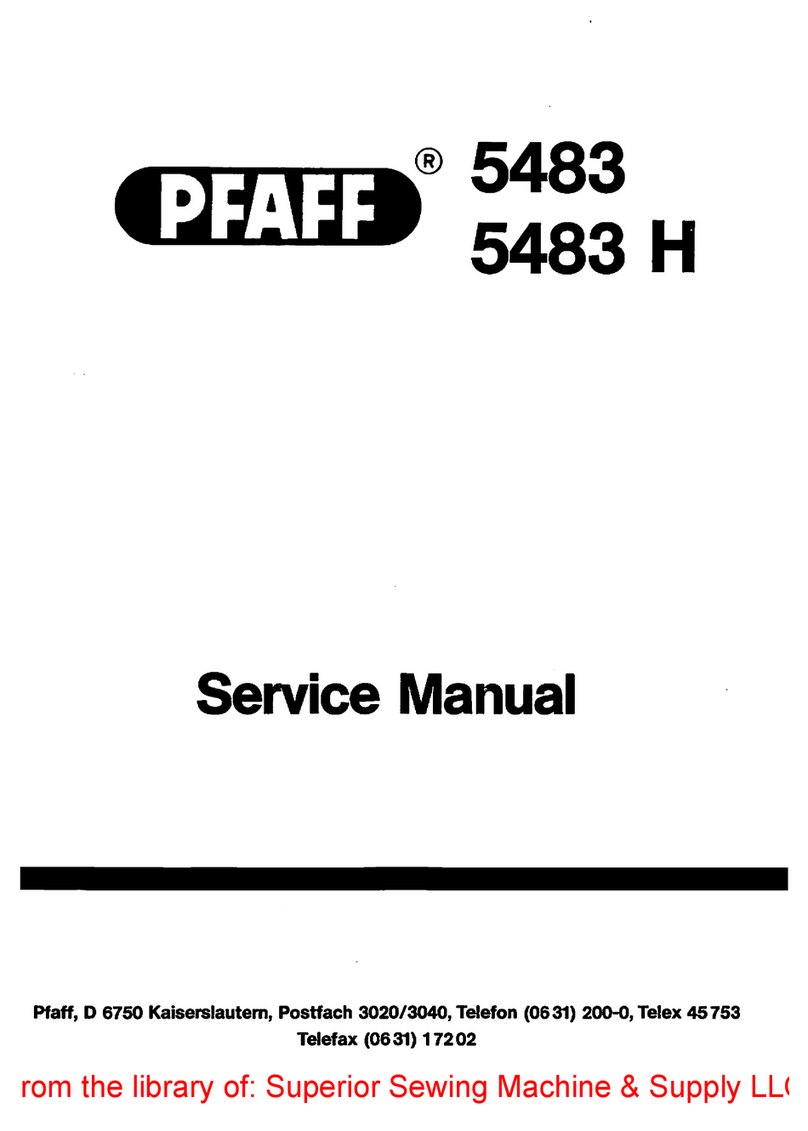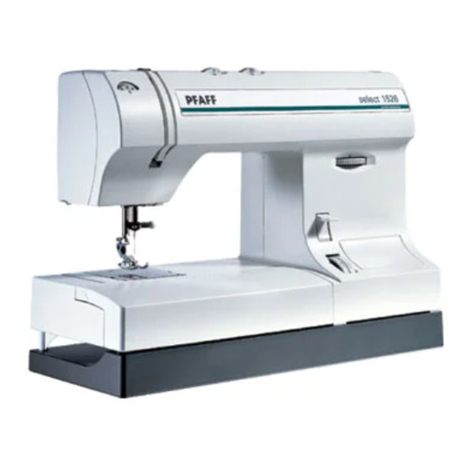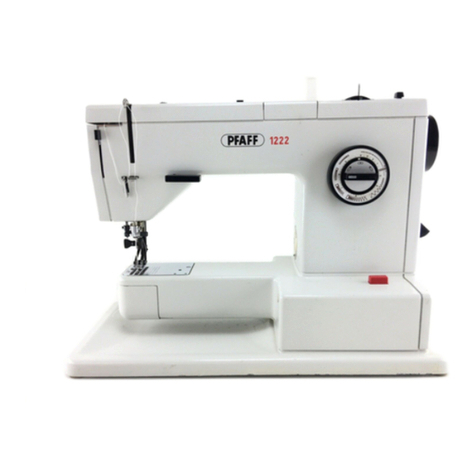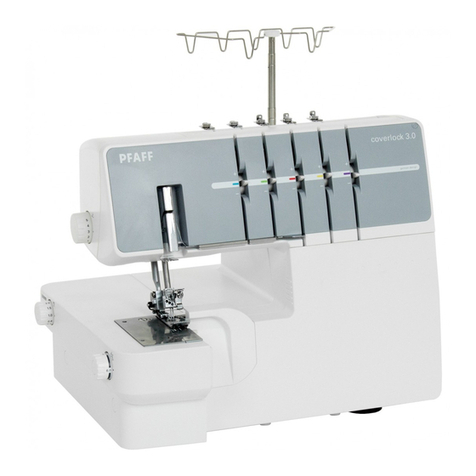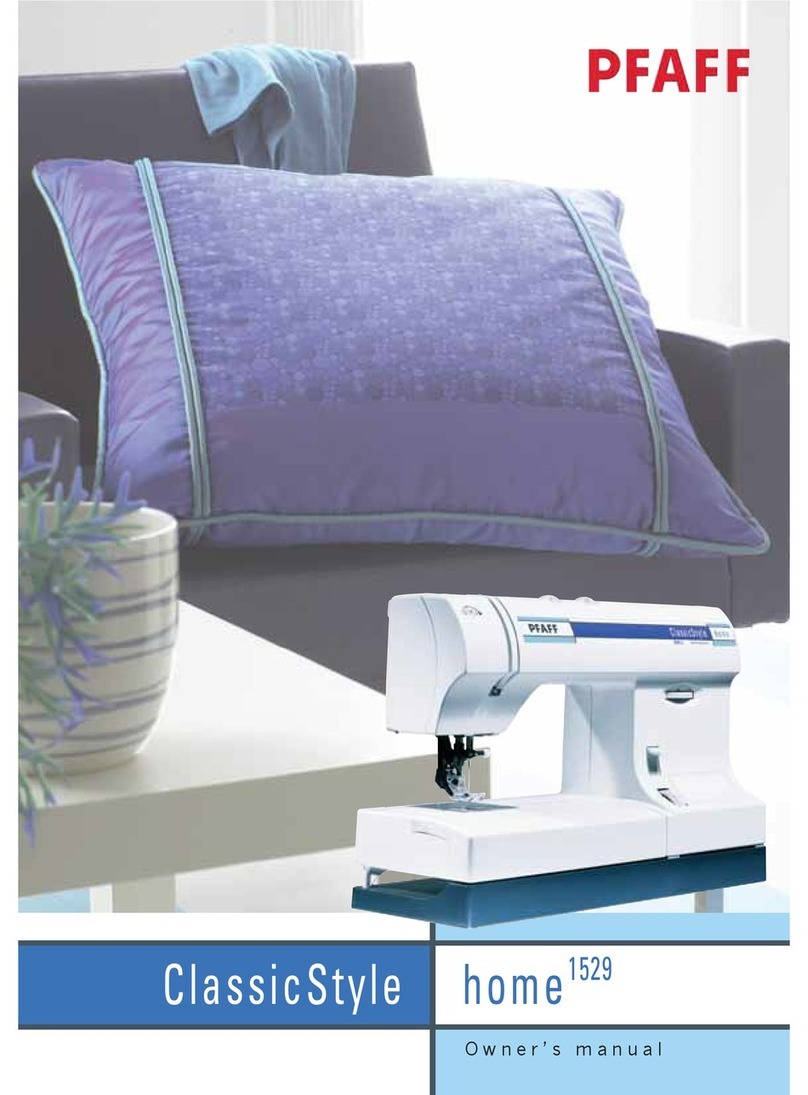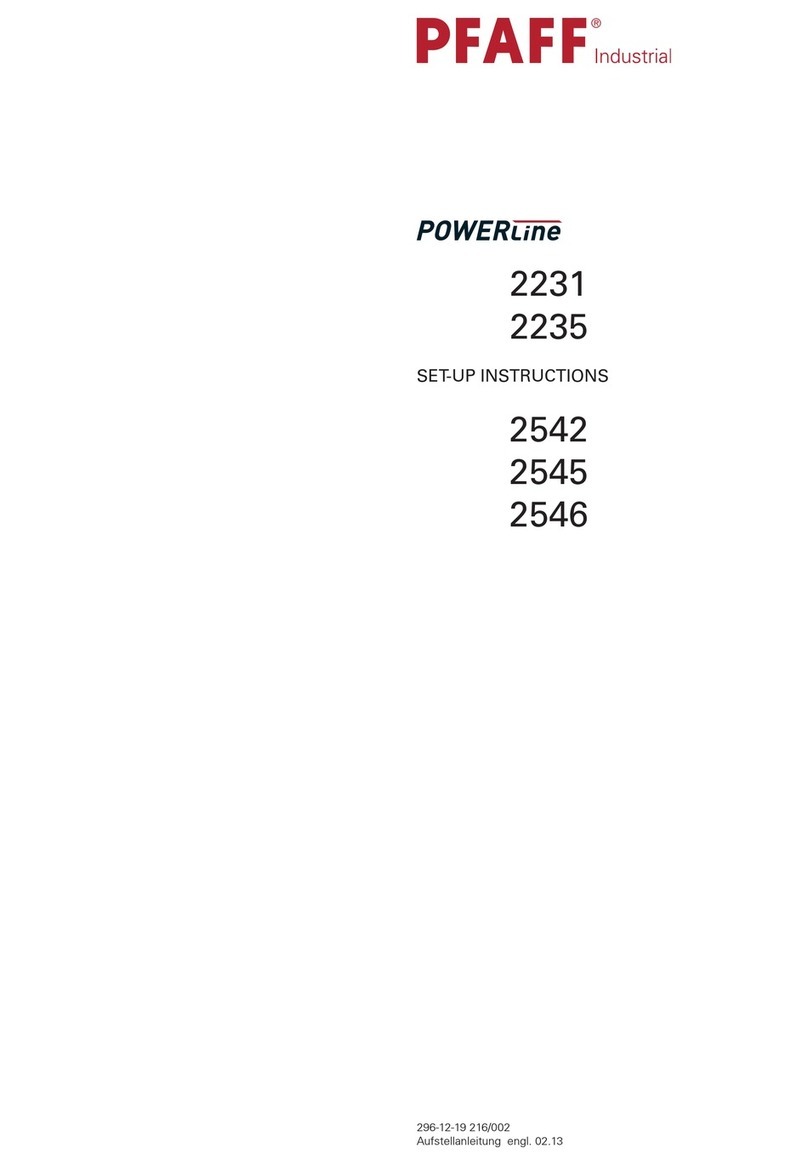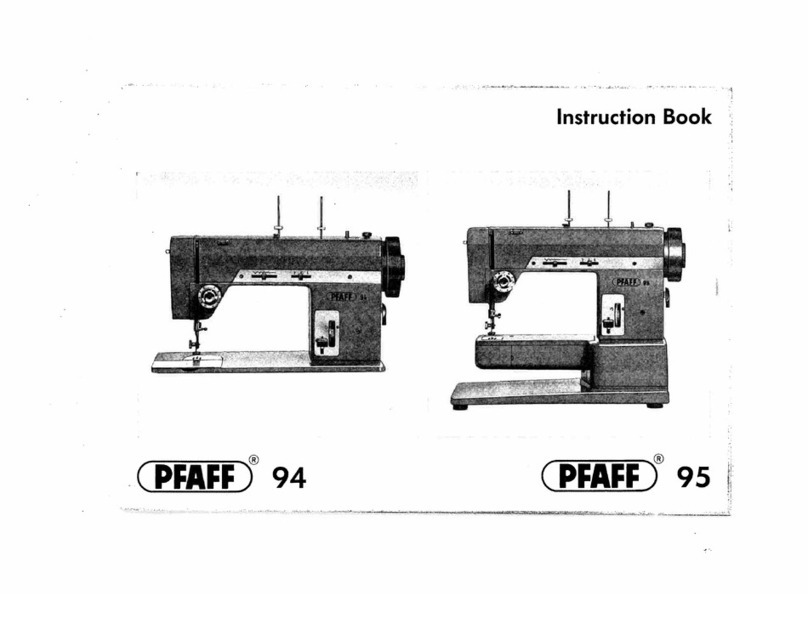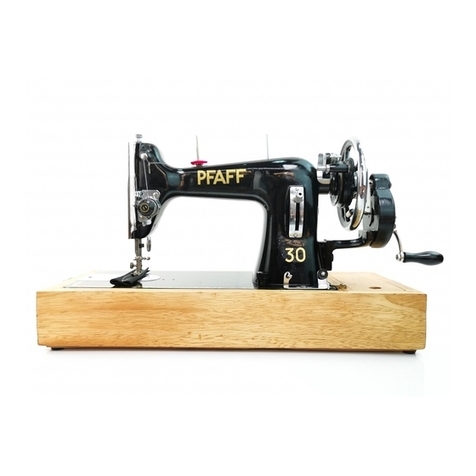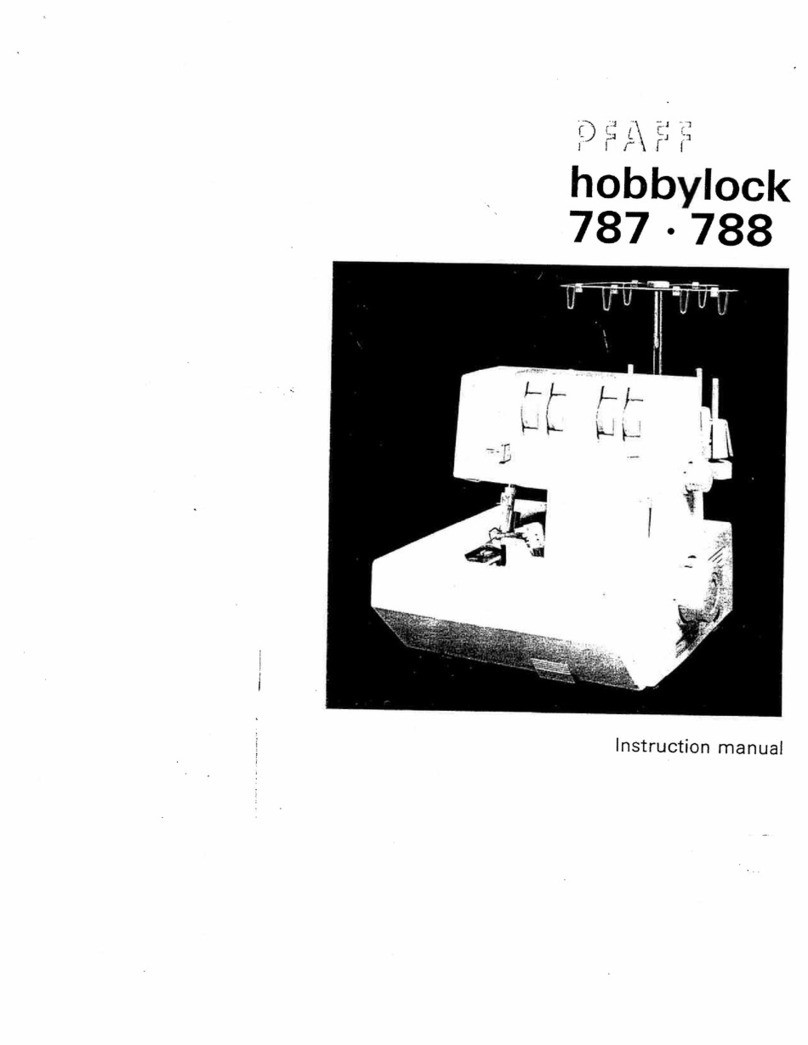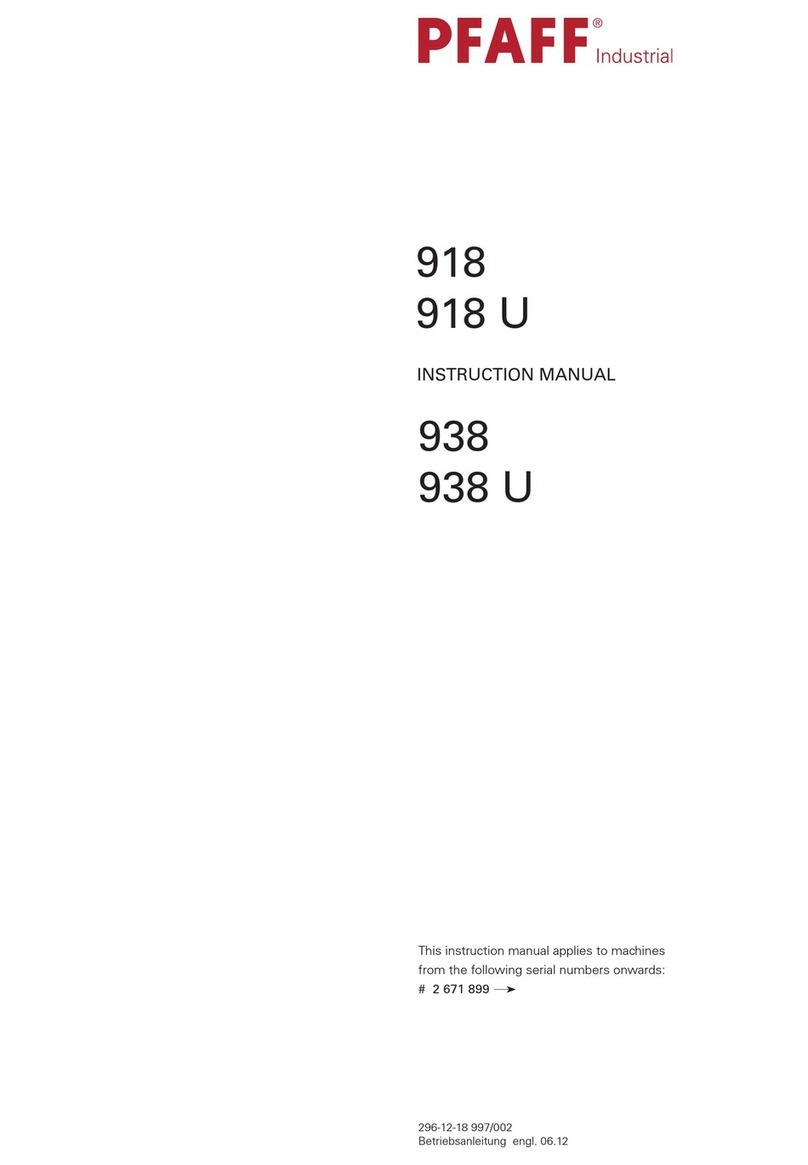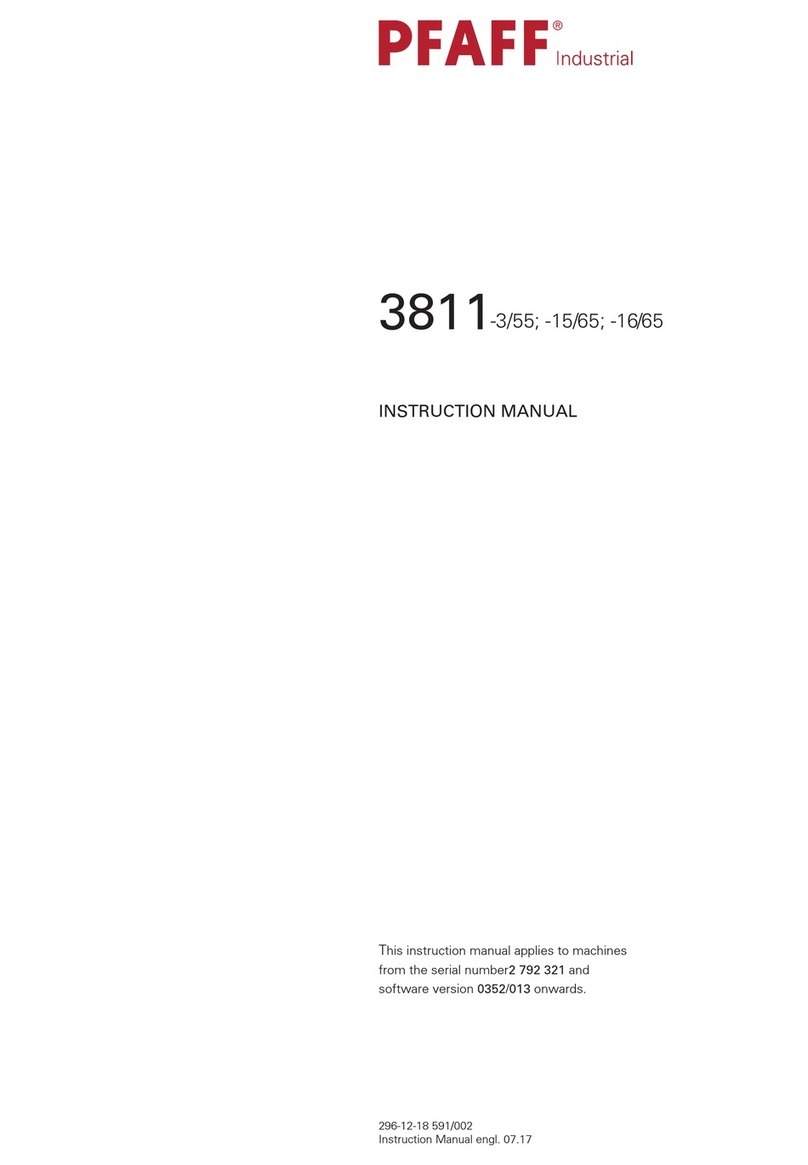
Contents
Contents ................................................................................. Chapter - Page
9Preparation .................................................................................................................. 9 - 1
9.01 Inserting the needle ...................................................................................................... 9 - 1
9.02 Winding the bobbin thread, adjusting the thread tension .............................................. 9 - 2
9.03 Removing / Inserting the bobbin case ........................................................................... 9 - 3
9.04 Threading the bobbin thread and regulating the bobbin thread tension ......................... 9 - 3
9.05 Threading needle thread/adjusting needle thread tension ............................................. 9 - 4
10 Care and maintenance .............................................................................................. 10 - 1
10.01 Care and maintenance intervals .................................................................................. 10 - 1
10.02 Cleaning ...................................................................................................................... 10 - 1
10.03 General oiling .............................................................................................................. 10 - 2
10.04 Oiling the sewing hook ............................................................................................... 10 - 3
10.05 Oiling the needle-head parts ....................................................................................... 10 - 3
10.06 Lubricating the bevel gears ......................................................................................... 10 - 4
10.07 Checking/adjusting the air pressure ............................................................................ 10 - 5
10.08 Cleaning the air filter of the air-filter/lubricator ............................................................. 10 - 5
11 Adjustment ................................................................................................ 11 - 1
11.01 Notes on adjustment................................................................................................... 11 - 1
11.02 Tools, gauges and other accessories .......................................................................... 11 - 1
11.03 Abbreviations .............................................................................................................. 11- 1
11.04 Adjusting the basic machine ....................................................................................... 11 - 2
11.04.01 Lateral positioning of the feed dog .............................................................................. 11 - 3
11.04.02 Lengthwise positioning of the feed dog ...................................................................... 11 - 3
11.04.03 Height of the bottom feed dog (only on machines with lifting phase – P-version) ....... 11 - 4
11.04.04 Centering the needle in the needle hole ...................................................................... 11 - 5
11.04.05 Pre-adjusting the needle height ................................................................................... 11 - 6
11.04.06 Driving motion of the top and bottom feed dogs ........................................................ 11 - 7
11.04.07 Lifting motion of the bottom feed dog (only on machines with lifting phase – P-version) .... 11 - 8
11.04.08 Needle rise, hook-to-needle clearance and needle height ........................................... 11 - 9
11.04.09 Vibrating presser lift ....................................................................................................11-10
11.04.10 Vibrating presser feeding motion ................................................................................ 11 - 11
11.04.11 Needle thread tension release .................................................................................... 11 - 12
11.04.12 Thread check spring .................................................................................................... 11 -13
11.04.13 Bobbin winder .............................................................................................................11-14
11.04.14 Regulating the pressure on the presser foot ............................................................... 11 - 15
11.05 Adjusting the thread trimmer -900/52 (optional) .......................................................... 11 - 16
11.05.01 Preadjusting the control cam ...................................................................................... 11 - 16
11.05.02 Tripping lever height .................................................................................................... 11 - 17
11.05.03 Feed regulator pin ....................................................................................................... 11 - 18
11.05.04 Engaging solenoid ....................................................................................................... 11-19
11.05.05 Adjusting the height of the feed regulator pin ............................................................. 11 - 20
11.05.06 Thread catcher, front point of reversal ........................................................................ 11 - 21


